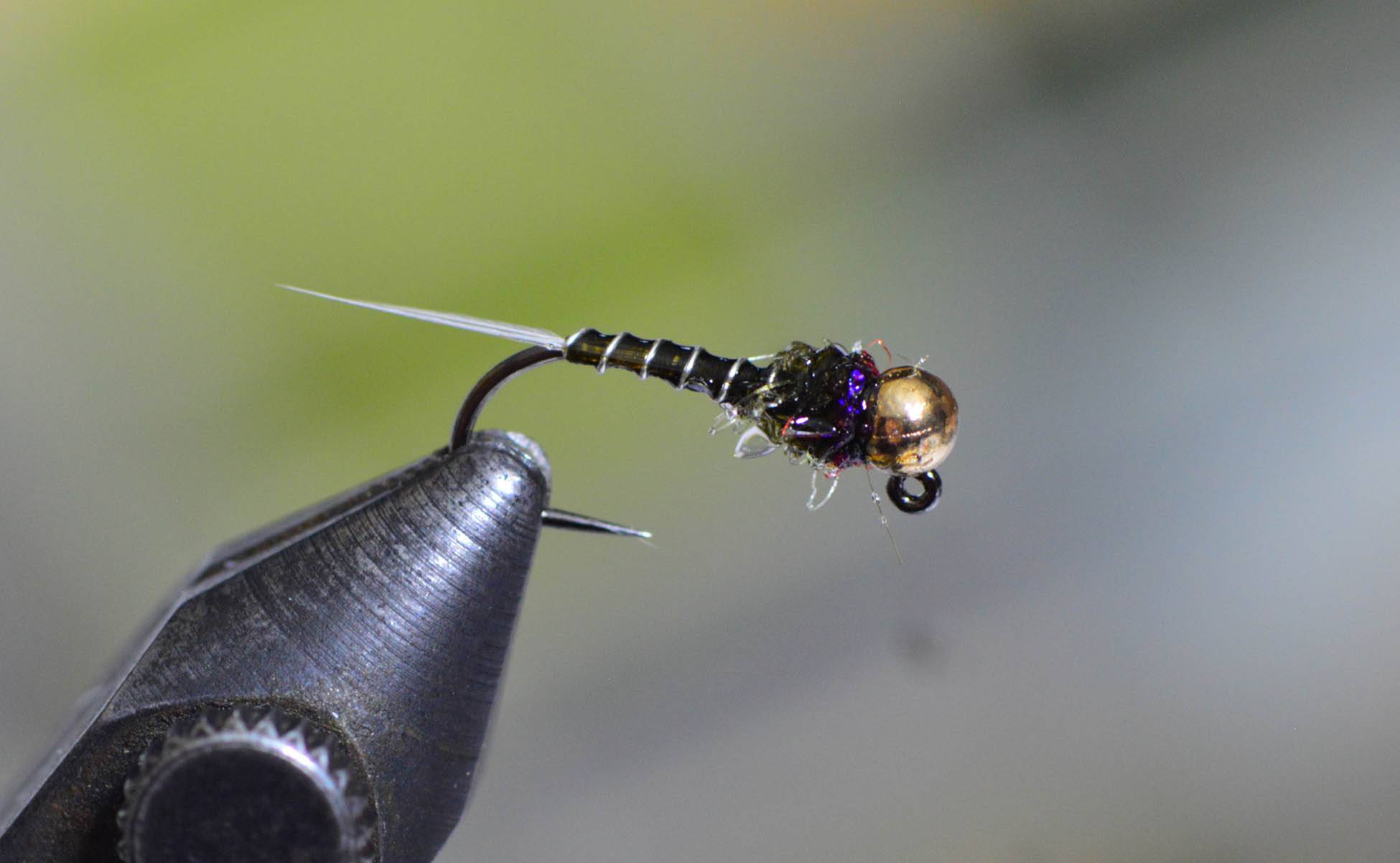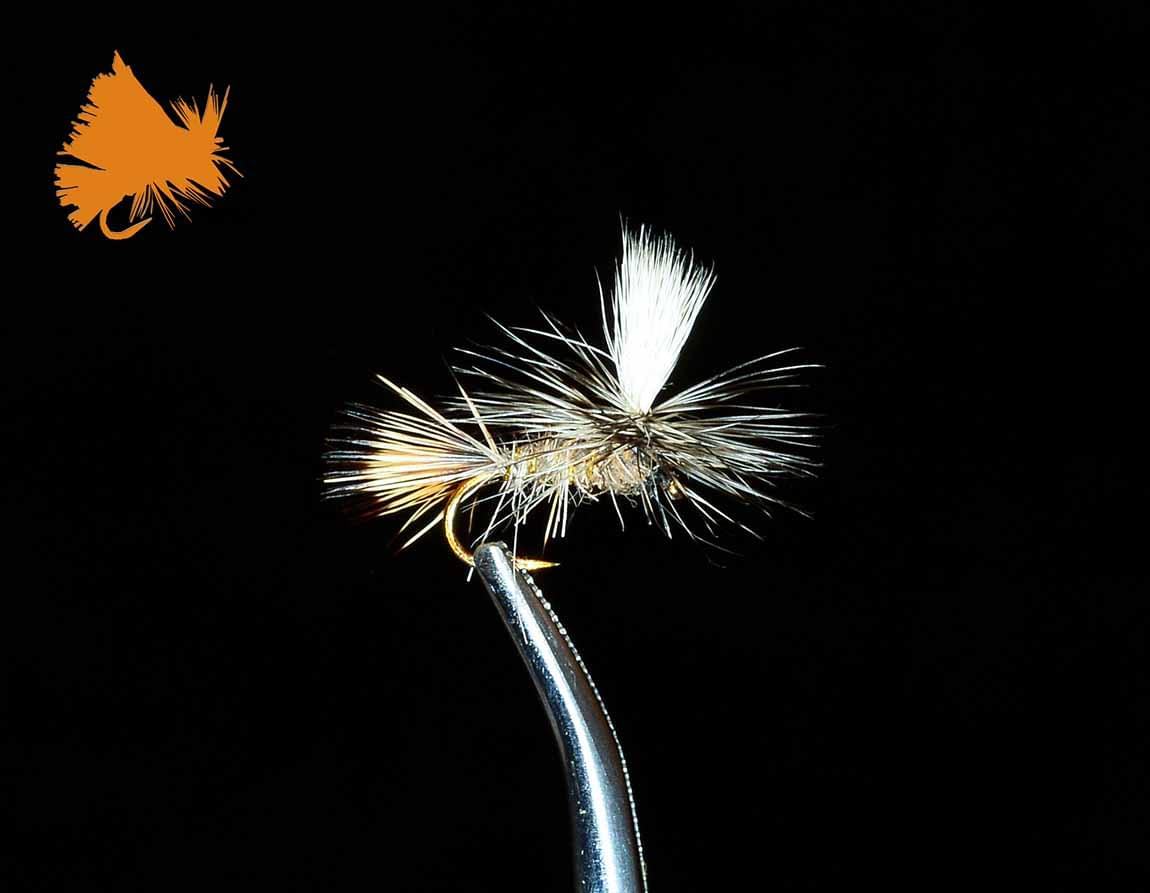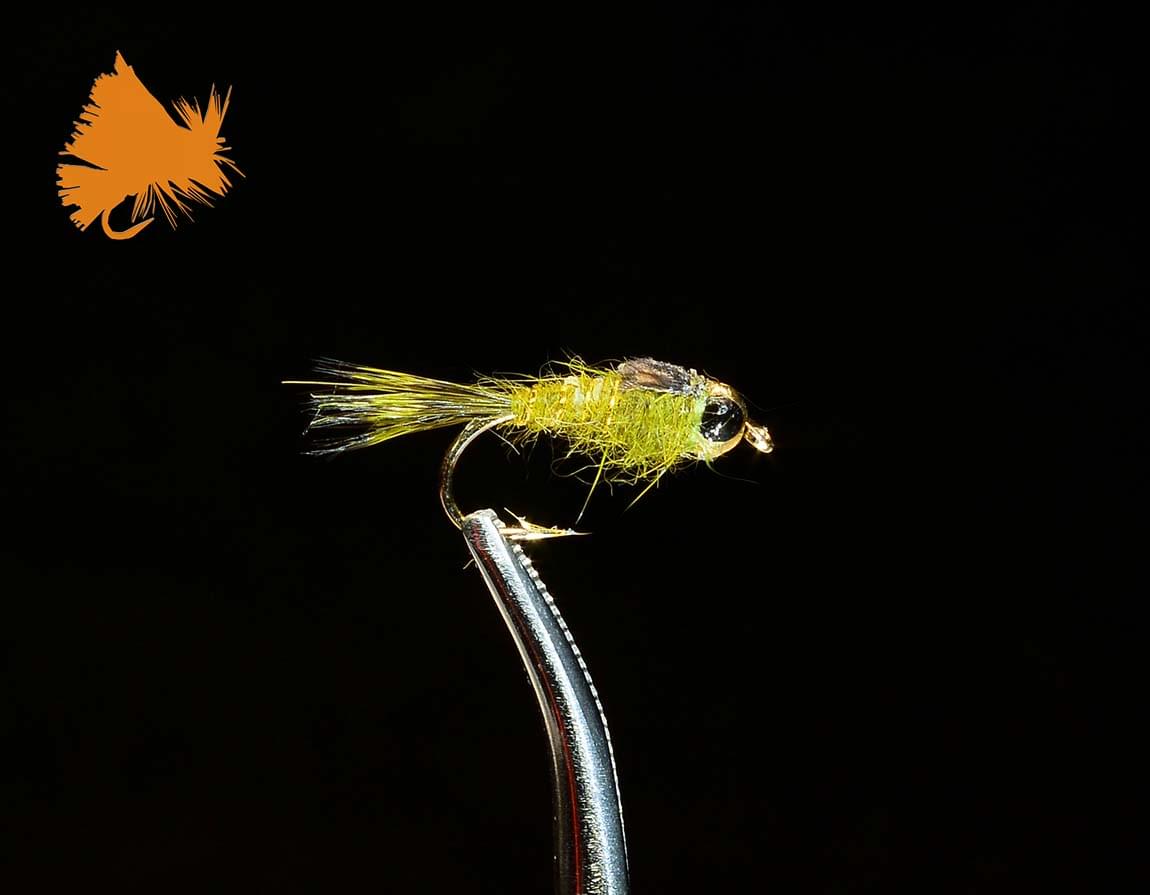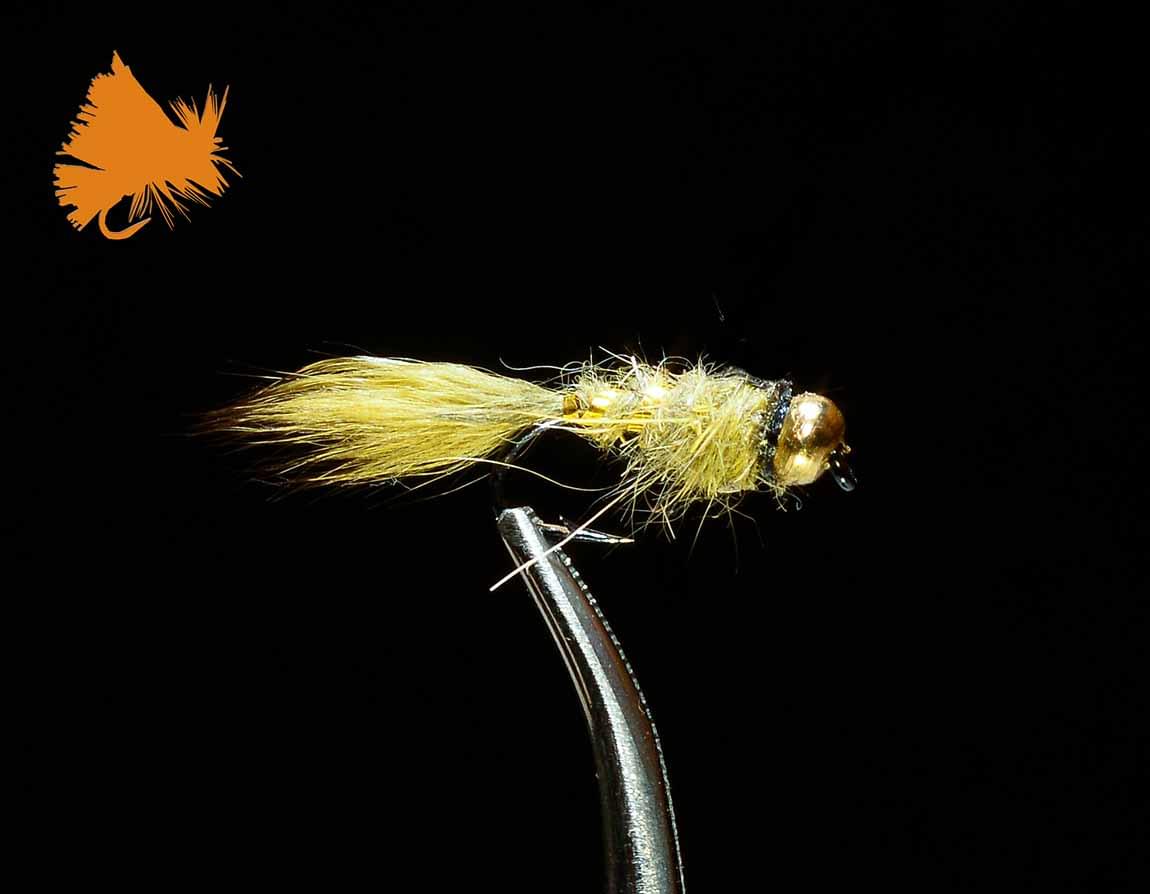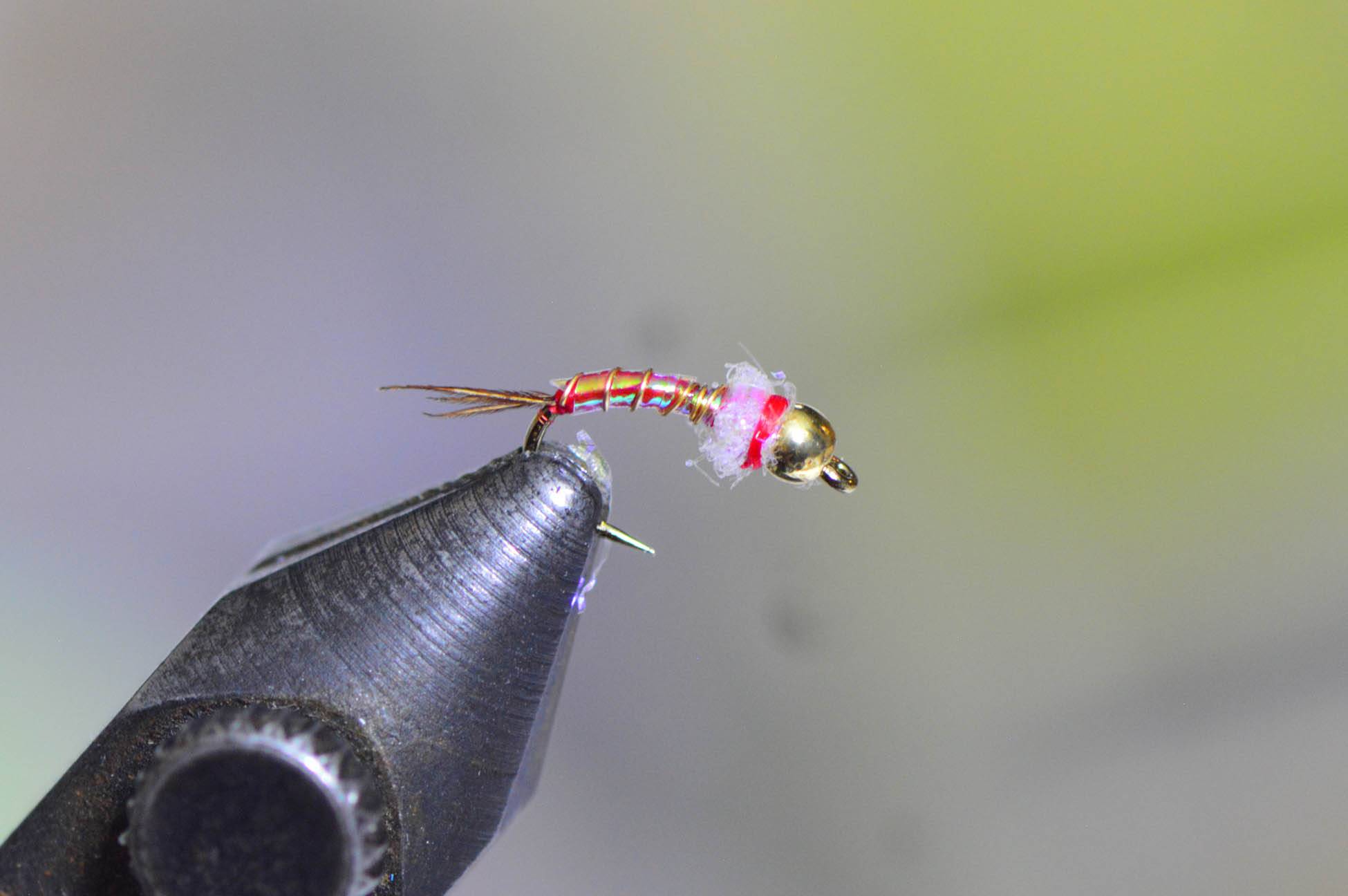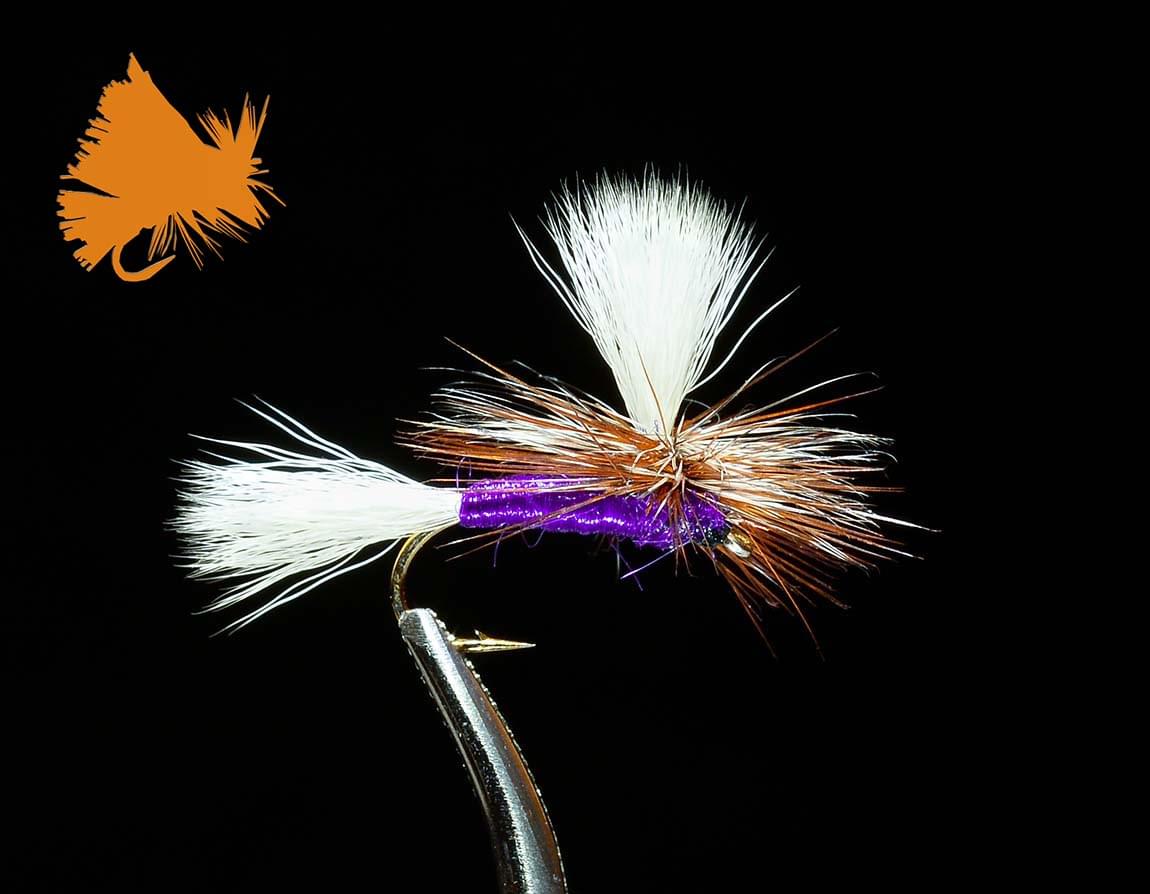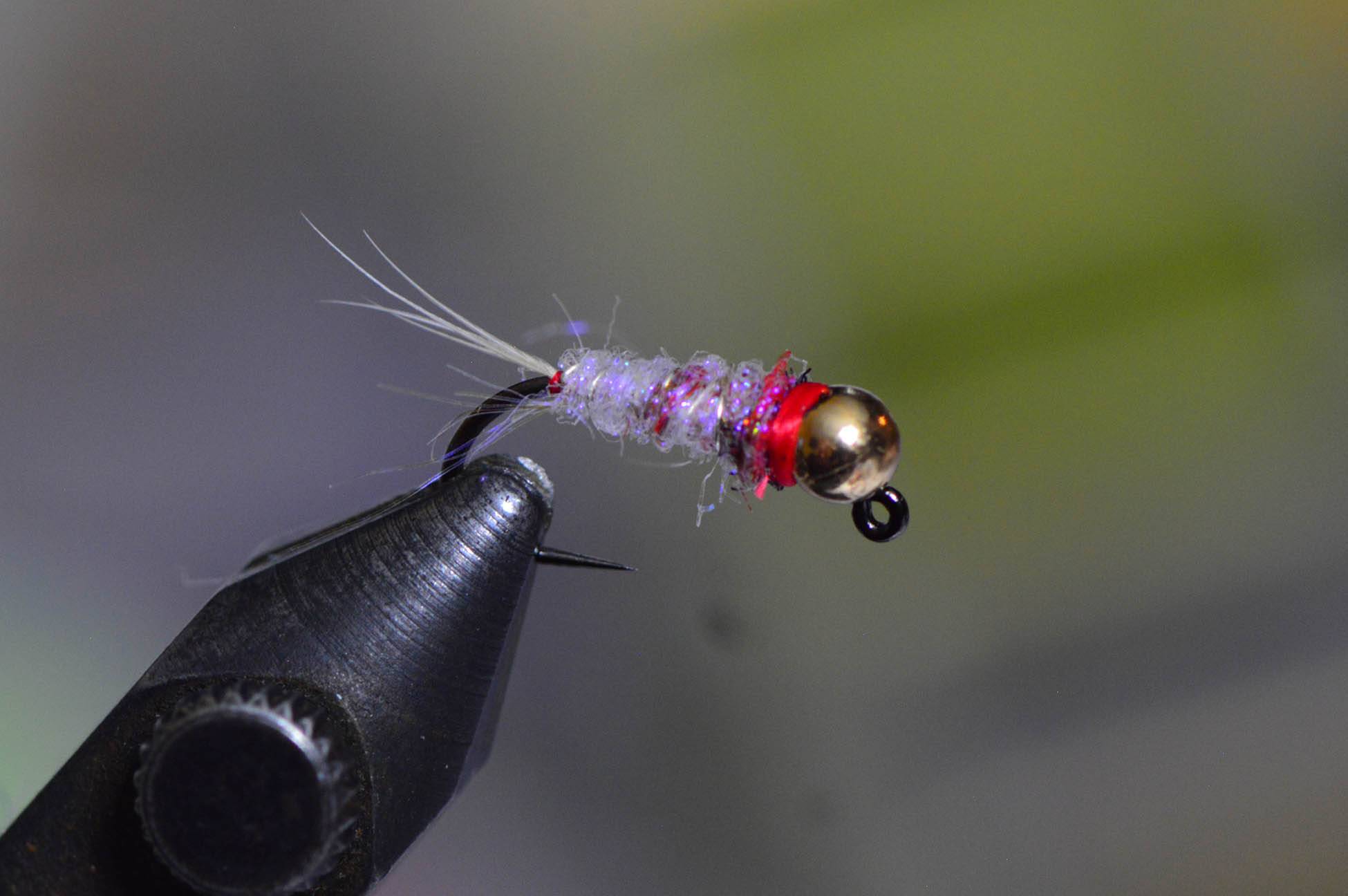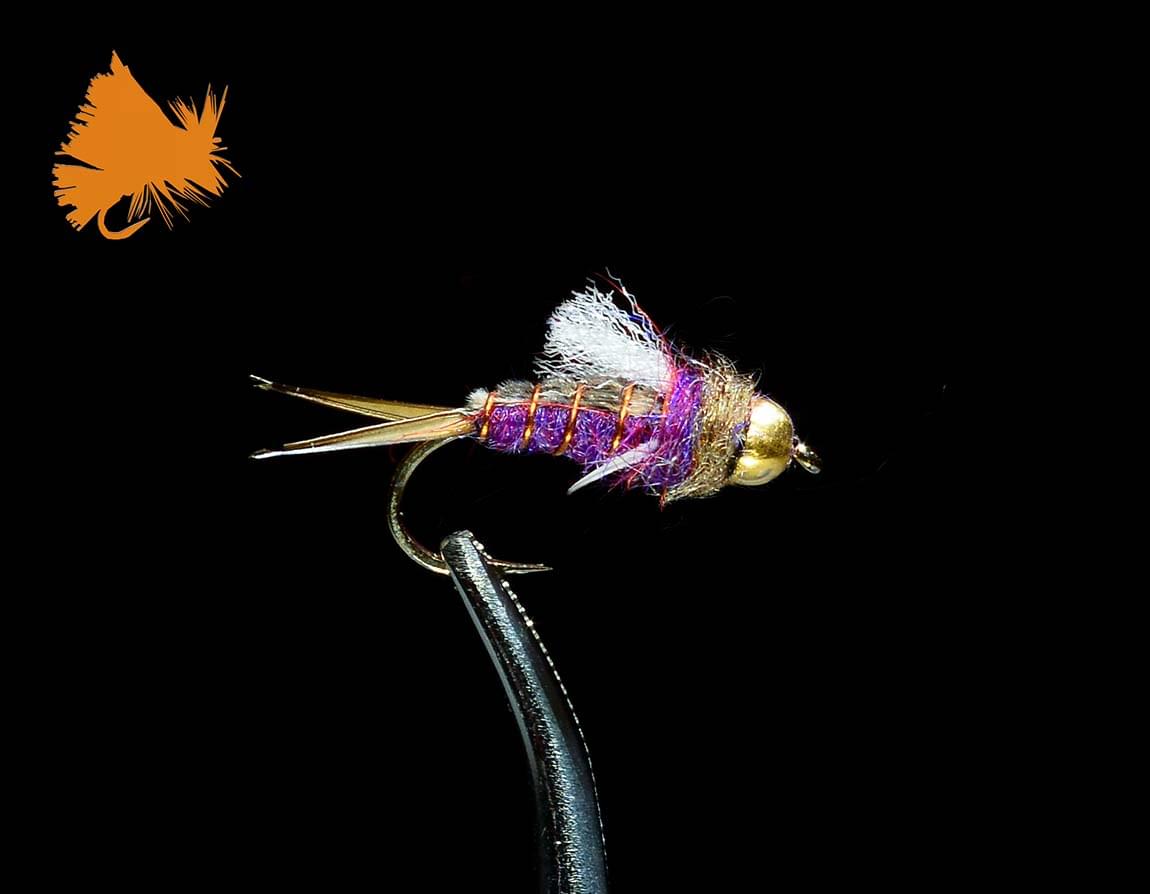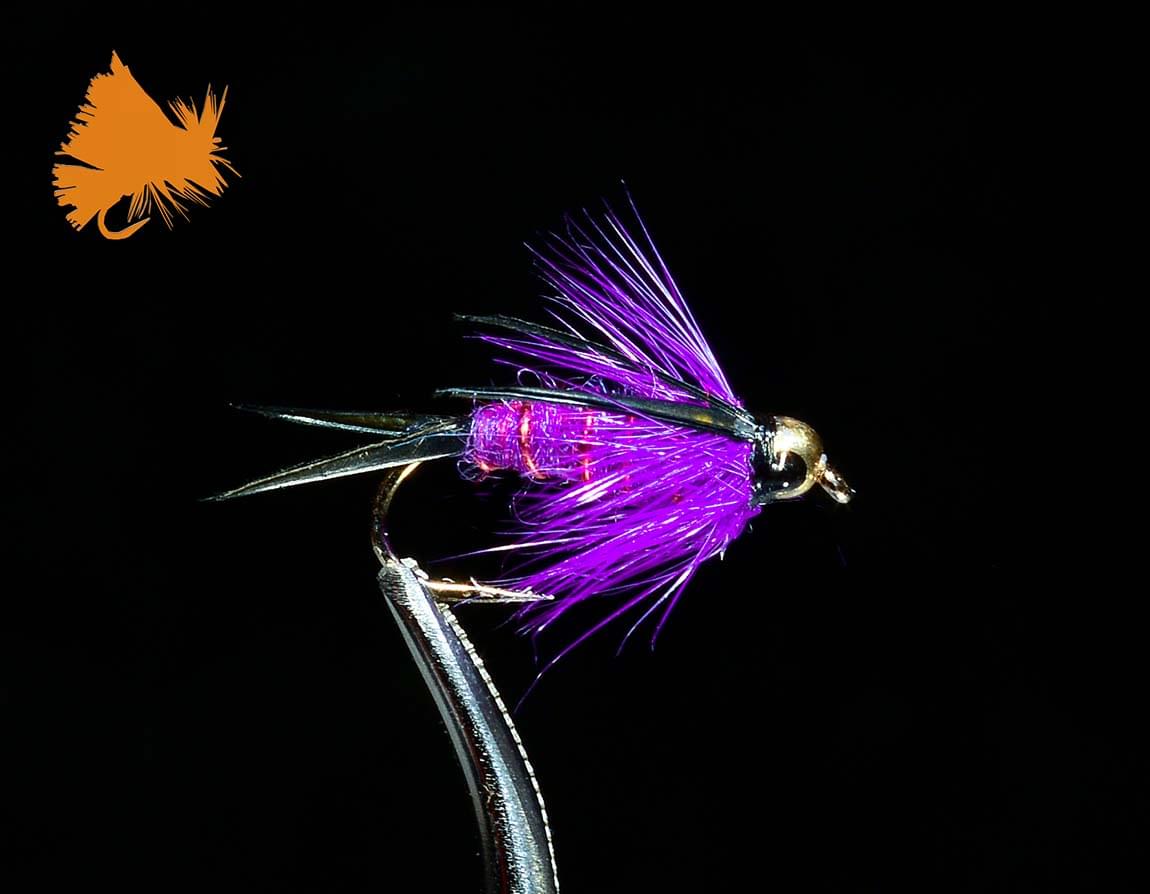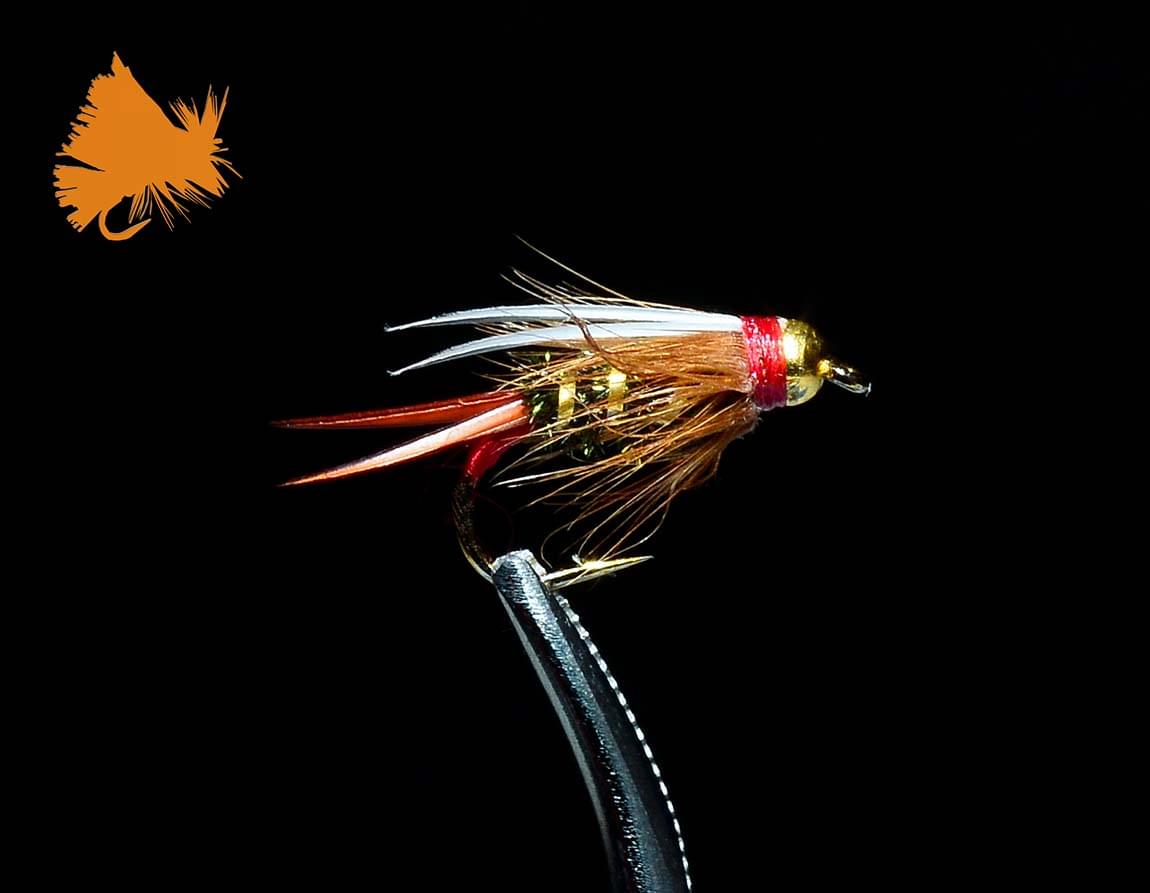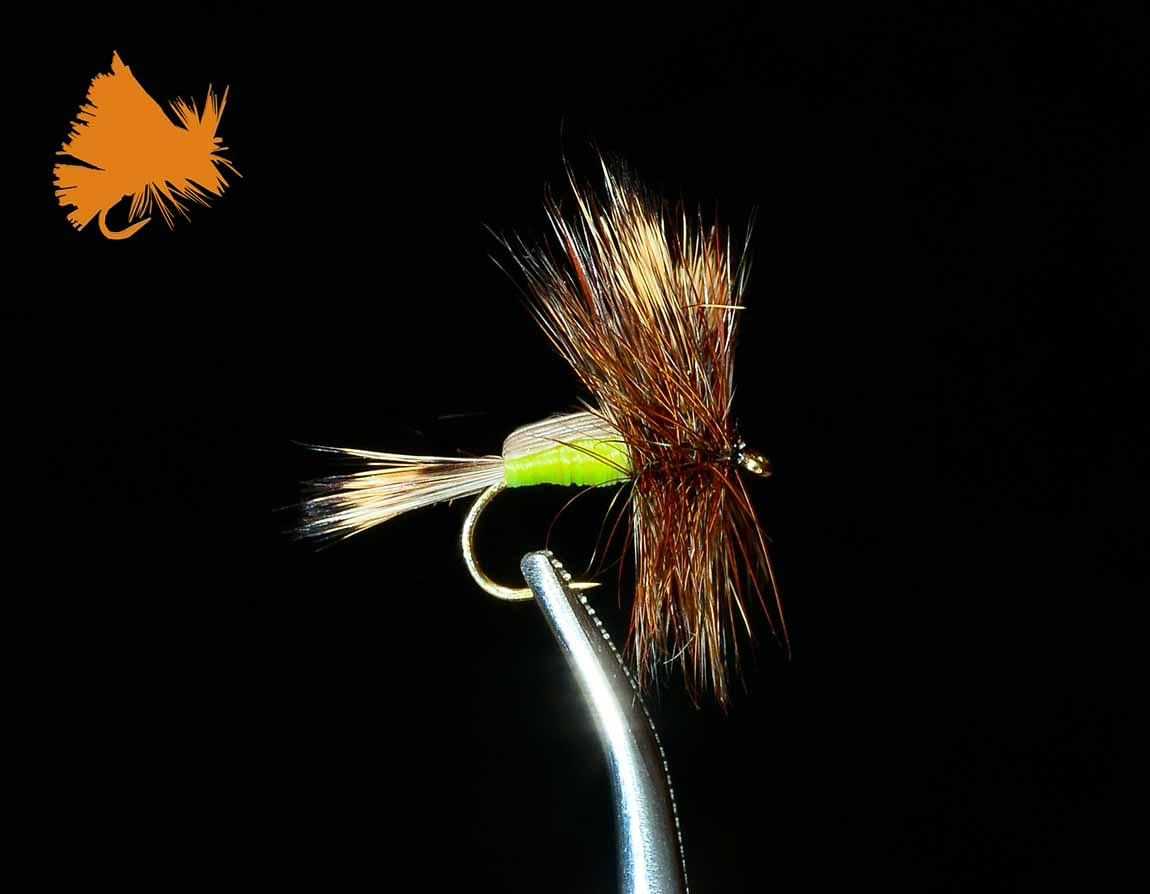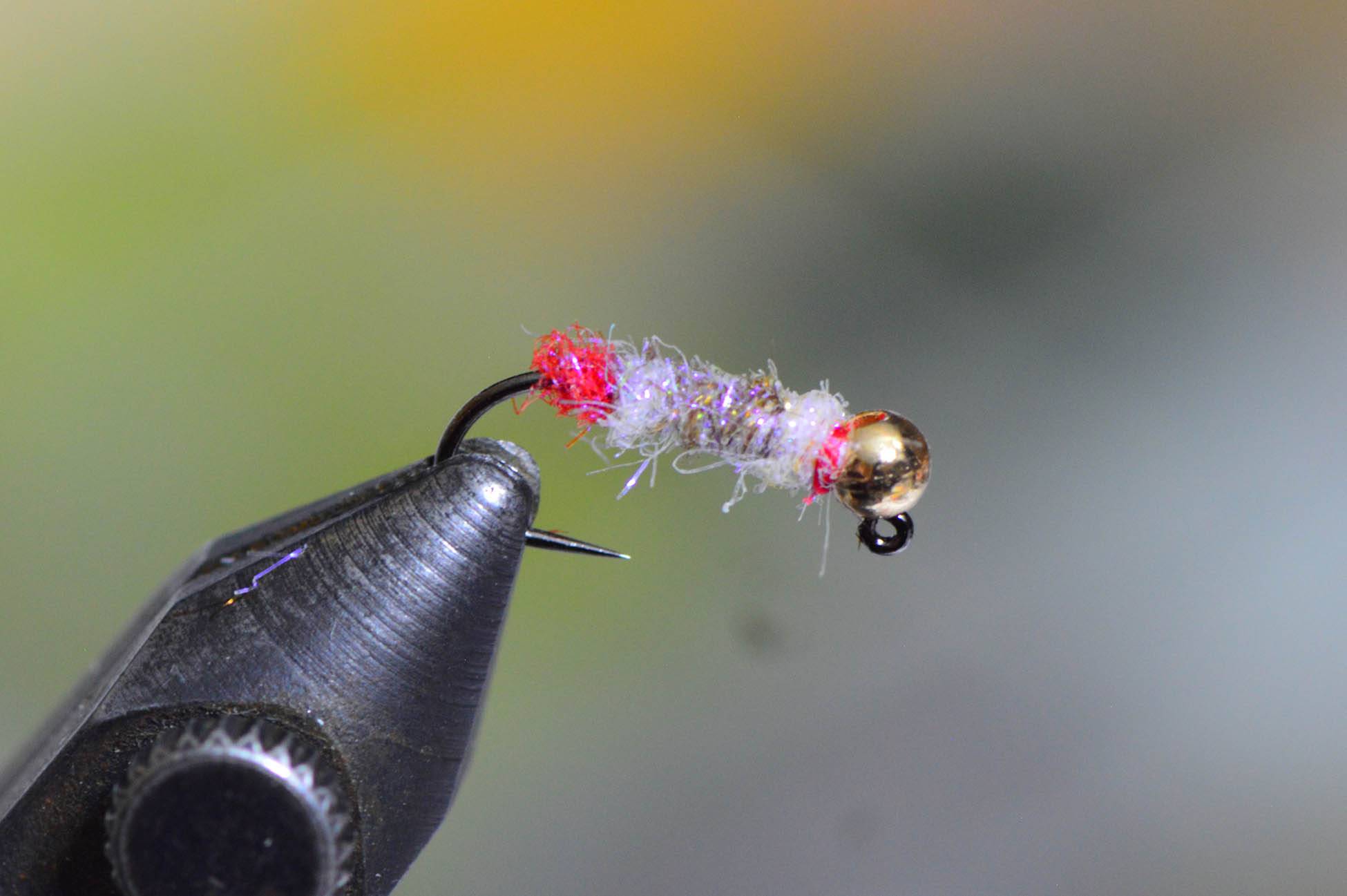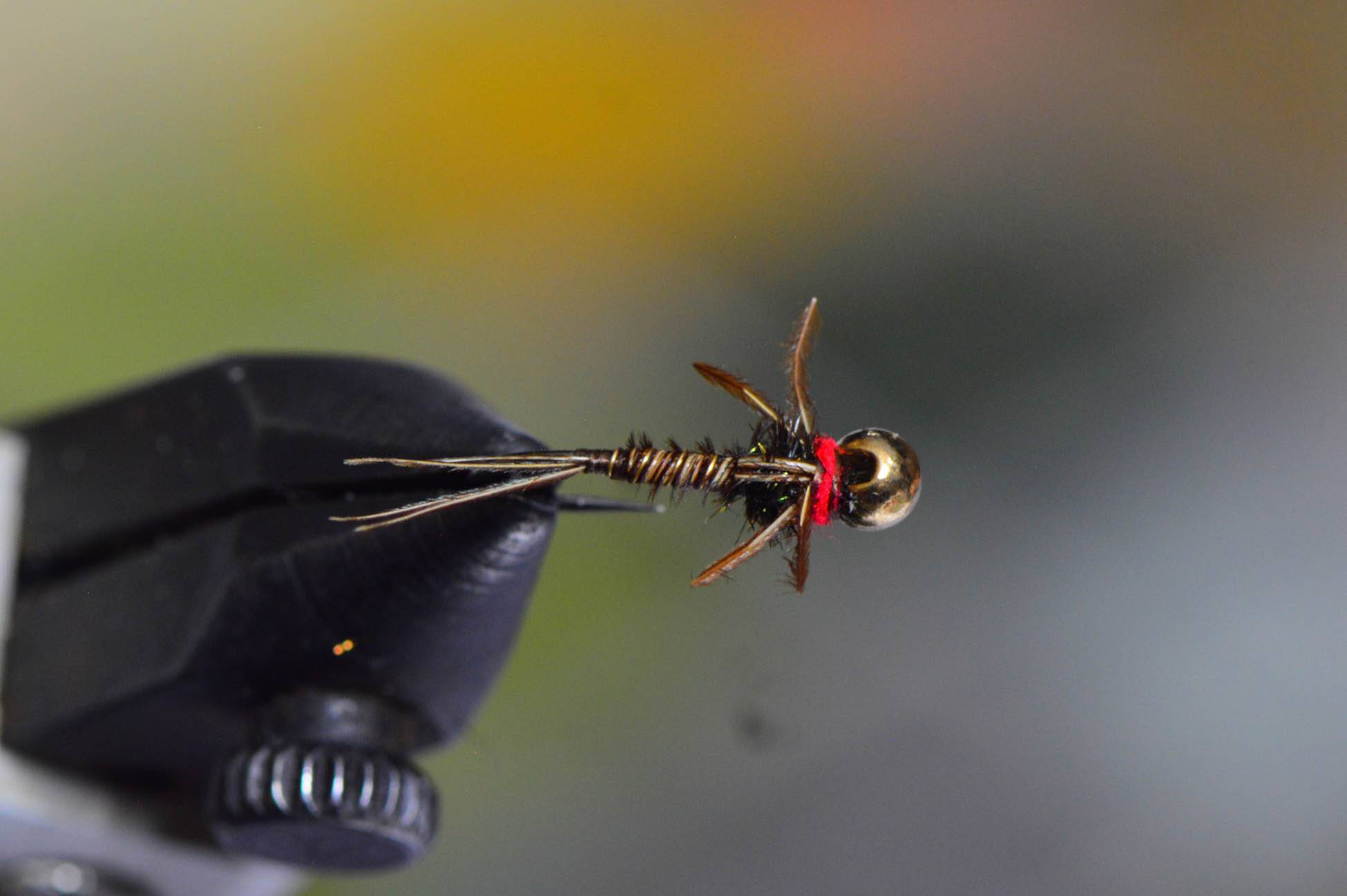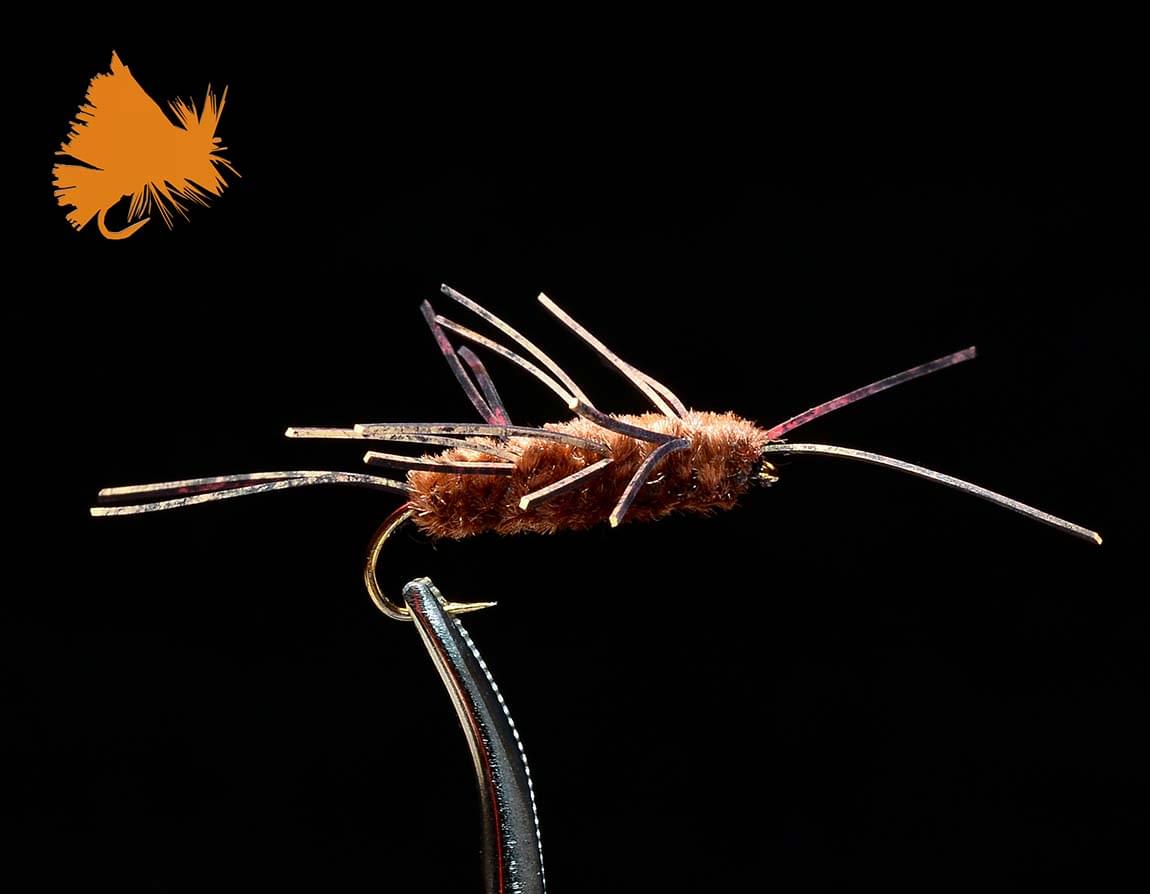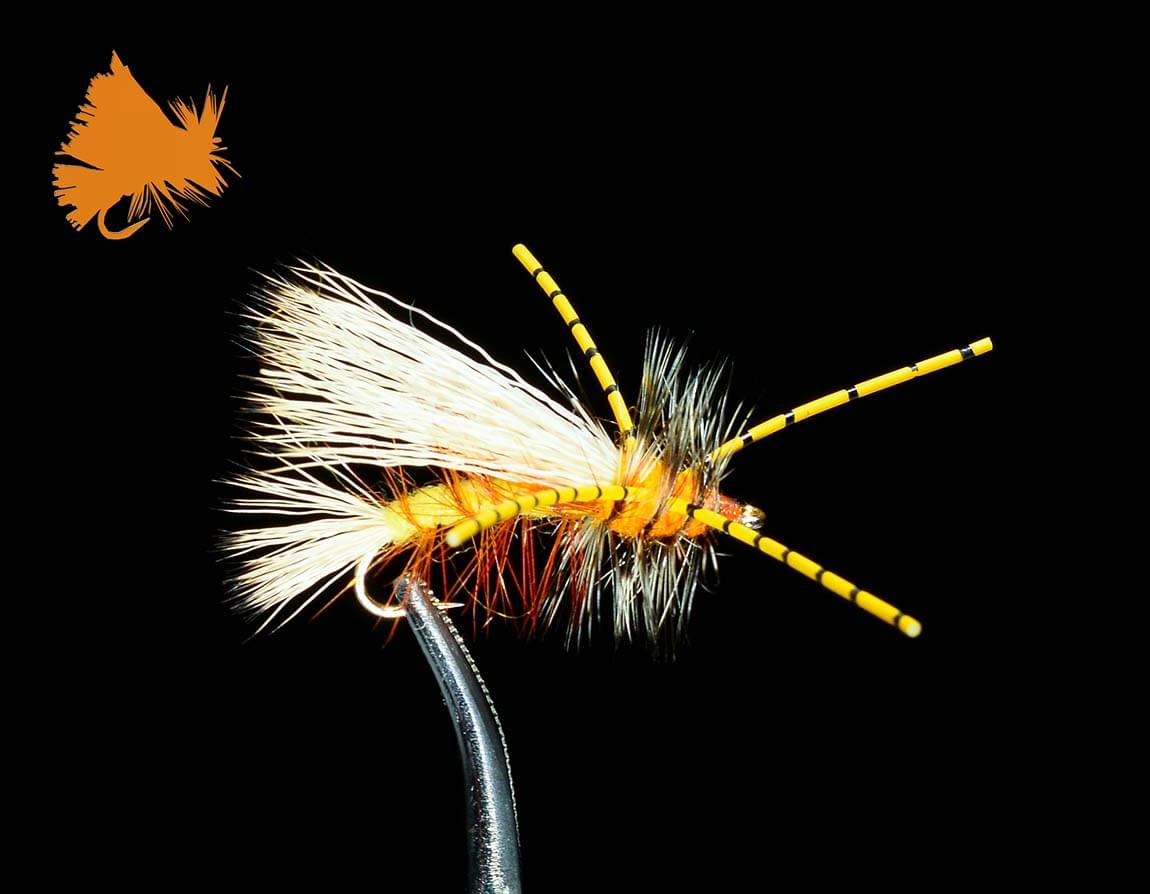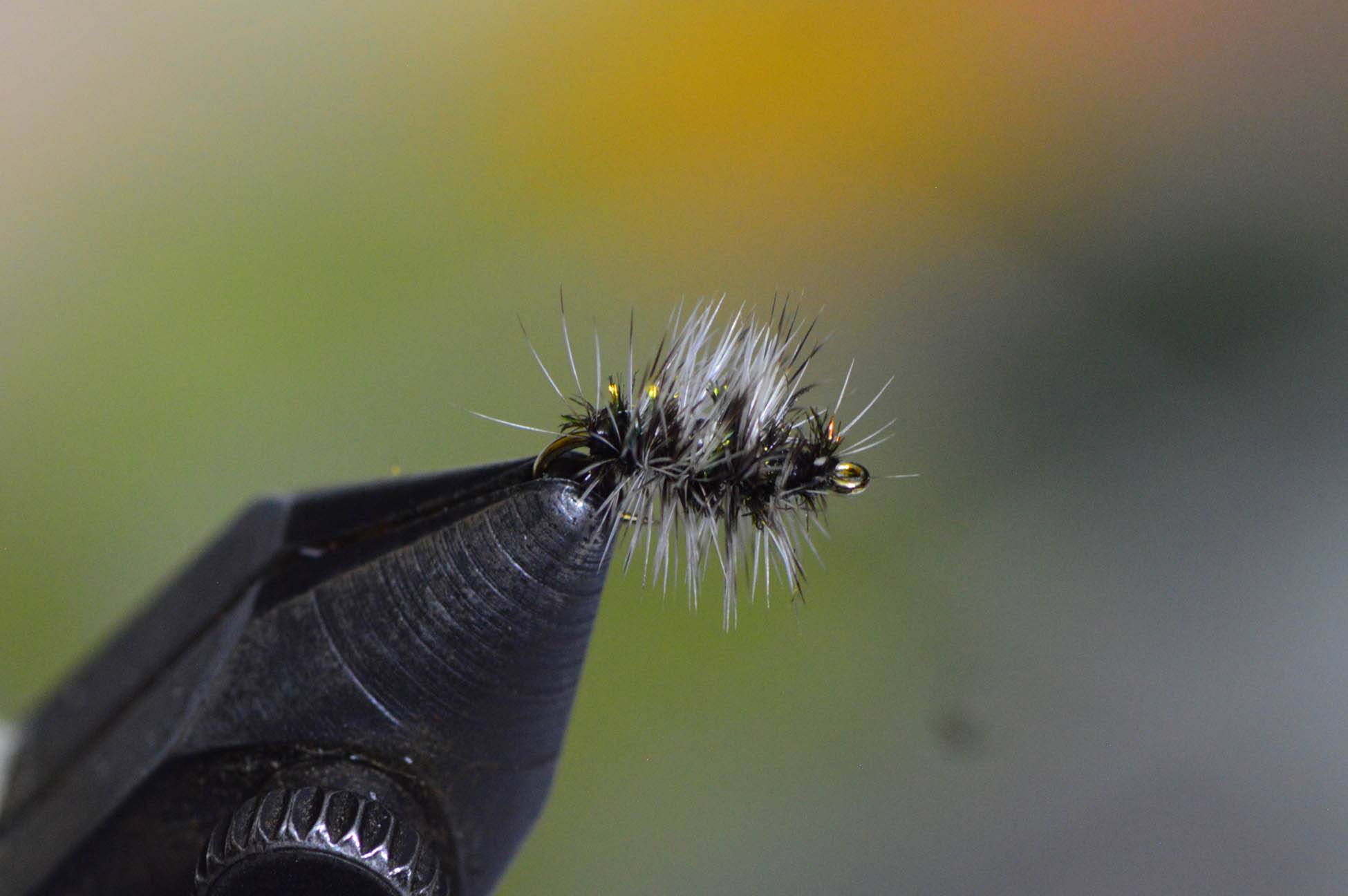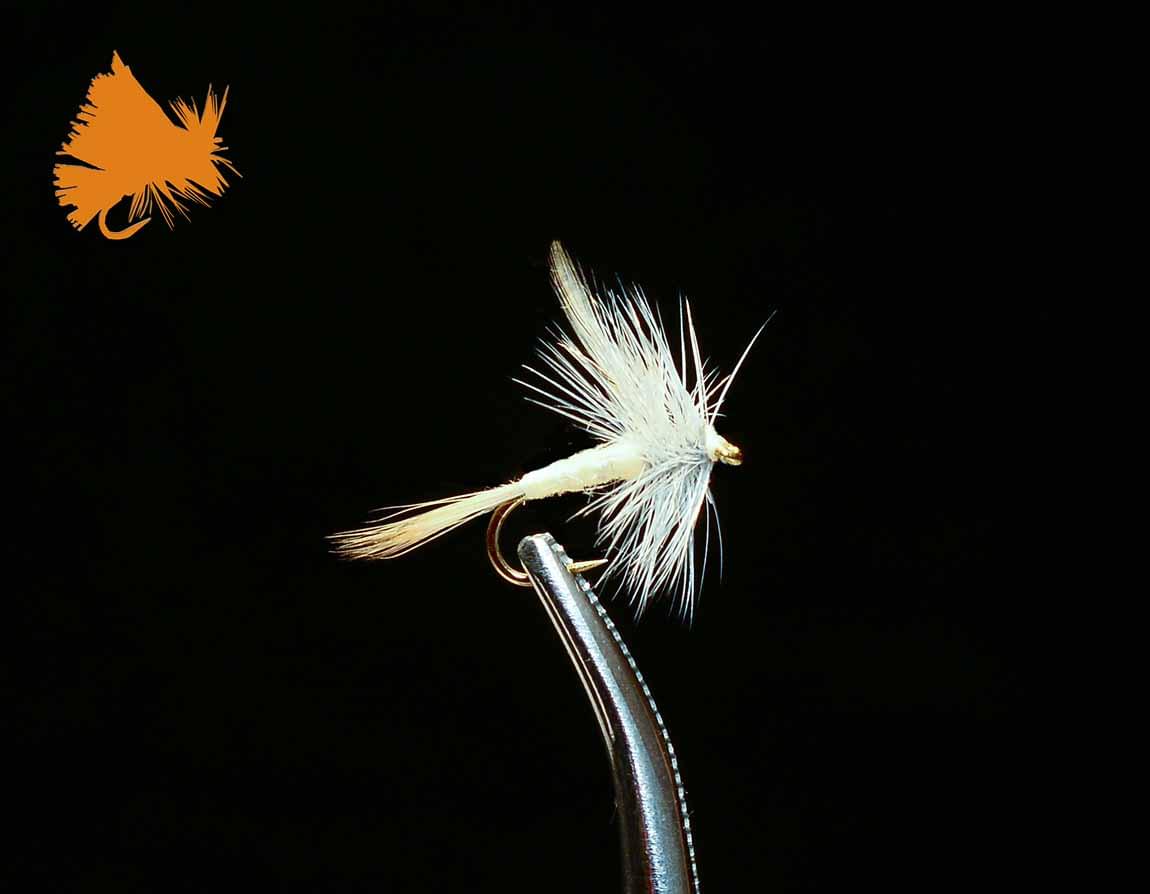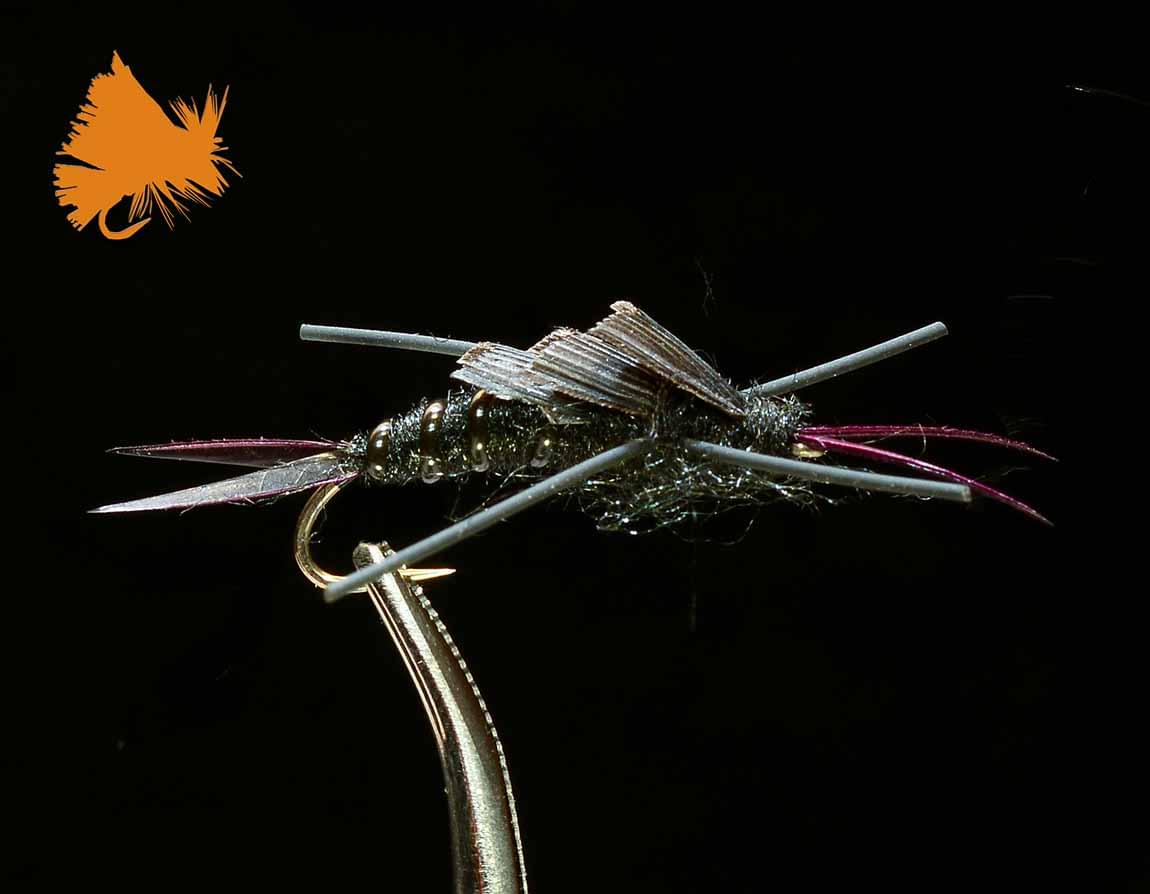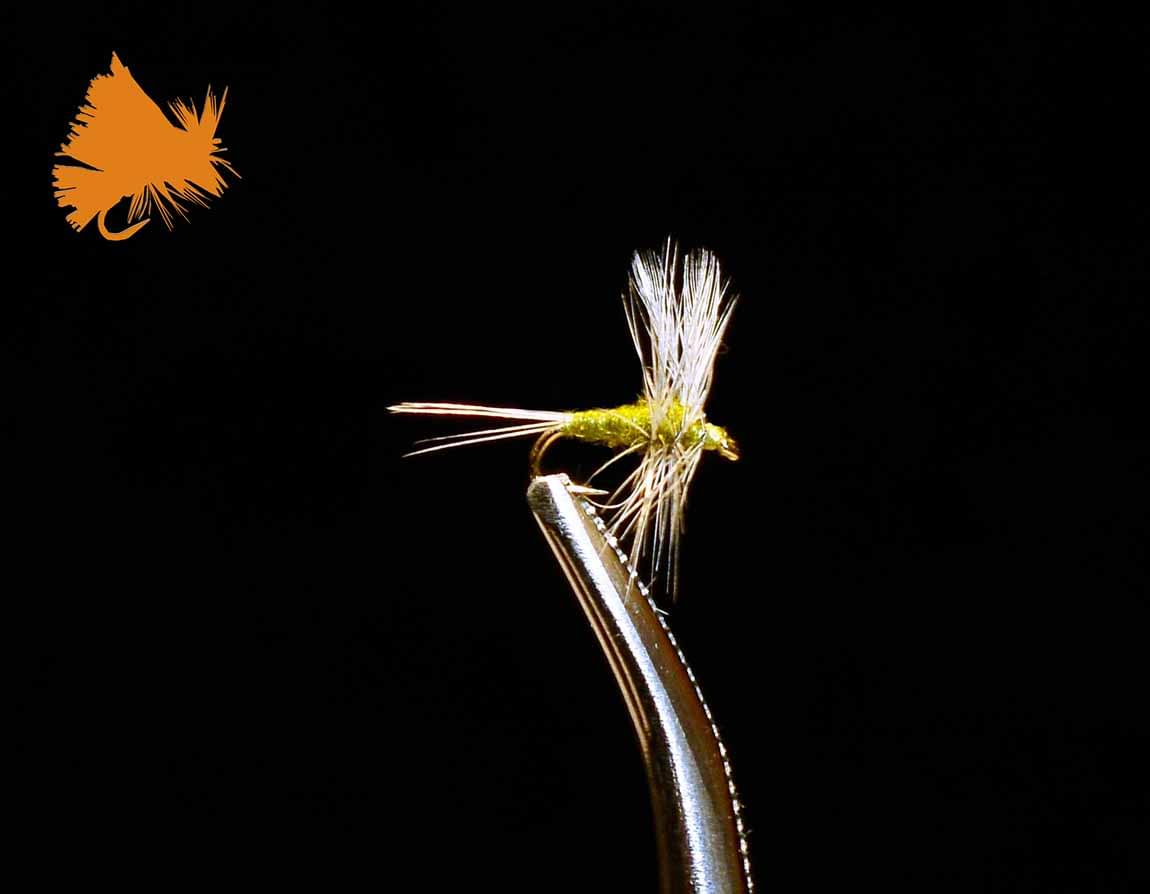The Four Kinds of Fishing Flies
A Guide to Understanding Patterns
Part 4 of 5 of Fly Selection Mastery Series
Join Our List
For Weekly Guides and Deals
The Importance of
Understanding Fly Names
I’ve had guys I fly fish with tell me story after story that follows this same path. “Ah man, I crushed it that day. I tied up these baetis patterns the night before and the fish just wouldn’t leave it alone! Must have landed 20 fish in an hour!” To them I enthusiastically reply, “Awesome man, it’s so much fun catching a fish on a fly you tied, especially with that much success!” Later that day, when we’re on the river, they open their fly box and pull me over saying, “hey here’s that fly I was talking about, what do you think?” That’s when it gets ugly. I’m torn between saying “Nice Fly, makes sense why the fish like it” and “Dude that’s not a baetis, that’s a caddis, how do you not know that?”
The more people I fish with and the more people I talk to I realize this is an epidemic in the fly fishing community. We don’t know our flies any better than we know our insects and that gets problematic for several reasons I wont’ even go into. The more important reason it matters is that if you’re the guy in the story above and think the caddis pattern you’re throwing is a baetis pattern instead, then next time a buddy tells you to go up and fish baetis on the river cause the hatch is on, you’re going to be screwed throwing a caddis at them all day when an olive mayfly is what they are eating. If we can’t communicate to one another on fly patterns, then we miss out on the ability to collaborate and all catch more fish, most importantly, you won’t catch as many fish.
How to Understand What Your Fly Pattern Imitates
The guy in the story above isn’t an idiot, he’s just mis informed and lacks a few key pieces of knowledge that will forever shift the way he views fly patterns. It will help him better communicate and understand from other anglers, the flies that are working. This will lead him and others to more fish on the river and a better adventure every time they are out on the water. It is going to take time to understand all the fly names and this article couldn’t possibly cover all of that but we are going to teach you how look at any fly pattern and understand the category of fly it is and what insect it likely imitates if any.
That’s what we’re here to teach you today. If you can understand the four fly categories that exist and their differences we can look at any fly and make a reasonable assumption as to what it imitates.
We’re going to go over the following four categories and explain how to identify them in any fly pattern:
- Search Patterns
- Attractor Patterns
- Impressionistic Patterns
- Imitative Patterns
Before We Begin, You Should Know This
This is going to sound like a shameless plug for my entomology course, but it is critical you know your insects. Here’s an example. If you are fishing a search pattern, let’s say a BH Hares Ear and you’re noticing that the fish are eating at the end of a drift as your fly begins to rise. Then you also see small insects coming off the water with sailboat like wings. To an angler that doesn’t know his insects, this information tells him to keep throwing the pattern he has on in hopes he’ll catch more fish. The the angler with entomology knowledge, he knows that those two bits of knowledge means there is a mayfly emergence/hatch happening and with a little further research into the adult insects or a bug seine, you can identify the color and size of the mayfly and then change your fly pattern to an emerger stage of that insect and present the same drift, yielding even more fish.
As you can see, the knowledge of what insects are present in the water, their current stage that trout are feeding on, and the ability to match them to a fly in your box is what separates the boys from the men in terms of more fish caught. If you don’t know a caddis from a mayfly, this article is only half as useful as the angler who knows those insects and needs to connect the knowledge of insects on water to flies in box with better accuracy.
Let’s dive into these four categories now and better understand them so we can catch more fish by identifying any fly pattern and what it imitates.
Get the Full Series
5 – Part Fly Selection Mastery Series
If you haven’t signed up for our full series you can sign up for it here to get all 5 guides in our fly selection mastery series.
Search Patterns
Patterns That Imitate a Wide Variety of Insects
Definition of a Search Pattern
A search pattern is a fly pattern that imitates as many bugs as possible in hopes that it can be used anywhere, anytime to find where fish are feeding.
Purpose of Search Patterns
Search patterns are used to find fish and their feeding behavior so you can then narrow down your fly selection and get deadly accurate and catch more fish. They are the tool of any good angler when he first gets on the water and has no idea what’s going on. Using a search pattern is like using a gatling gun instead of a sniper rifle, you’ll find fish with this fly, it will just often take a few more casts than with a more imitative pattern.
As you begin to catch fish with this pattern, you’ll notice you’ll find fish in holes or runs or riffles. Perhaps you find fish eat the fly at the end of your drift as your fly skates to the surface. Whatever the case, once you catch a couple fish, you’ll often start to find a pattern to the fish location or feeding behavior giving you better clues on what they are feeding on more directly. Then with that knowledge you can refine your pattern selection to something more imitative and hopefully catch more fish.
Characteristics of Search Patterns
Typically, search patterns will be neutral colored, often tan, grey or something that doesn’t force the pattern out of imitating something in the river.
In addition, search patterns will be ambiguously tied with a lot of materials that neutralize the profile of the insect. Using messy materials like hares ear dubbing, or techniques like touch dubbing a fly pattern often creates a messy look that allows the insect to imitate a variety of insects in the water.
Examples of Search Patterns
Beadhead Hares Ear

The famous hares ear is likely the most popular search pattern in most of our boxes. Notice how the body is tied with errant hair coming out from all directions and the overall profile and taper of the pattern is even from back to front? This allows the pattern to imitate stoneflies, mayflies, caddis and more. Fish see this pattern and if it’s close to what they see and are eating in the water, they are all over it.
Beadhead Neverbug

Here is another example of a neverbug that imitates an emerging caddis or mayfly as well as a caddis or stonefly nymph. Touch dubbing was used to create the head of the fly and enhance the overall “bugyness” of the fly allowing it to imitate everything and nothing all at the same time.
More Examples of Search Patterns
Click to view larger images of the examples below
- Iron Lotus Variant
- Parachute Hares Ear
- Brown Neverbug
- Olive Hares Ear Variant
- Tan Neverbug
- Beadhead Hares Ear
Learn to Tie Perfect Flies
Fly Tying Membership
- Full access to entire library 300+ patterns (including new releases)
- Traditional and modern patterns for trout, carp, bass, saltwater and more
- Customizable filters to help you find and favorite patterns for your tying session
- Timelapse & regular speed HD macro angle videos for any skill level
- Recipe recommendations delivered to your inbox every week
- Access from any device
- Mark recipes as favorites and find for later use
- Detailed information around each fly so you can learn to fish them better
$3/month (paid annually)
Attractor Patterns
Patterns That Imitate Nothing, and Attract Everything
Definition of an Attractor Pattern
An attractor pattern imitates nothing and attracts everything in hopes of helping fish see and become motivated to eat.
Purpose of Attractor Patterns
Similar to a search pattern in purpose but different in approach. The purpose is to find fish when you can’t find them using more natural patterns or to persuade fish to eat when they refuse more imitative patterns. A search pattern still has the approach of imitating something natural in the water, while an attractor patterns says screw it, let’s just get their attention. They may be as classy as an extremely low cut shirt on a woman, but they get attention. I’ve had days on the water where I can’t figure out what fish are eating and after trying several imitative patterns, decide to throw imitation out the window and fish something that gets attention. Usually fish are being opportunistic when feeding on an attractor pattern.
Characteristics of Attractor Patterns
Attractor patterns are either brightly colored or contain flashy materials in excess. Musky and pike flies are all about attracting the fish, not convincing it that it is an exact imitation of a baitfish. Brightly colored wire or thread is often the majority of the fly and any flashabou, tinsel, or flash materials are all over the fly.
Examples of Attractor Patterns
Rainbow Warrior
 The best example I always give is a rainbow warrior. Aside from the pheasant tail, this pattern is bright red thread, tinsel wrapped and rainbow dubbing. It’s a monster for purists and one of my favorite flies. Yes it can imitate a midge or mayfly nymph that’s emerging, but most of the time it’s just a flashy bug that gets the proper attention of the trout we’re after.
The best example I always give is a rainbow warrior. Aside from the pheasant tail, this pattern is bright red thread, tinsel wrapped and rainbow dubbing. It’s a monster for purists and one of my favorite flies. Yes it can imitate a midge or mayfly nymph that’s emerging, but most of the time it’s just a flashy bug that gets the proper attention of the trout we’re after.
Higas SOS
 Here is a good example of something we haven’t brought up yet, a hybrid imitative and attractor pattern. You’ll see a lot of “hot spots” on flies these days. The idea behind them is to create an imitative insect and then add something attractive that sets it out from the group touching on both schools of thought that a fly can be accurate to the insect and stand out, creating the extra attention necessary to catch trout in pressured or food rich waters. This is a proven and very useful technique.
Here is a good example of something we haven’t brought up yet, a hybrid imitative and attractor pattern. You’ll see a lot of “hot spots” on flies these days. The idea behind them is to create an imitative insect and then add something attractive that sets it out from the group touching on both schools of thought that a fly can be accurate to the insect and stand out, creating the extra attention necessary to catch trout in pressured or food rich waters. This is a proven and very useful technique.
As you can see you can mix and match fly categories, but understanding what parts are mixed helps you understand what the fly is doing for you in the water and when to use that fly.
- Rainbow Warrior
- Purple Haze
- Tungsten Surveyor
- Yellow Double Humpy
- Psycho Prince
- Purple Prince
- Desert Storm Midge
- Red Humpy
- The Fly Formerly Known as Prince
- Green Humpy
- Sexy Walts Worm
- Red Double Humpy
Impressionistic Patterns
Patterns That Imitate A Few Insects Closely
Definition of an Impressionistic Pattern
Impressionistic patterns imitate a couple of insects or stages at a time with good accuracy without sacrificing versatility.
Purpose of Impressionistic Patterns
These are similar to search patterns, except they are meant to imitate a narrower set of insects. These flies definately look like something, but they don’t just imitate one bug in one stage, they imitate a few at a time that are similar and could overlap. The purpose of this is when you want to throw something more defined than a search pattern because you have some idea of what’s in the river and moving, but not enough to narrow it down exactly. It could also be that multiple insects are active and this does a sufficient job of imitating both increasing chances of catching fish.
This is personally my favorite of the four options and where most of my patterns in my box reside. For example, a green drake nymph, free-form caddis nymph, and brown stonefly nymph could all be imitated by a impressionistic pattern. A pheasant tail imitates those three well enough to fool a fish that takes less time to decide. These fly types have the most use when fishing faster moving water where fish only have a few seconds at best to eat or refuse the fly. Given enough time, the fish may catch on, but if you can restrict that time a minimum, they often can’t resist to at least try the fly. Combining a “hot spot” when tying these flies can make for a deadly combination or attractor methodology and impressionism to fool trout and gain attention.
Characteristics of Impressionistic Patterns
Impressionistic fly patterns will often be naturally colored to known insects in the river system and have fairly defined profiles. They often imitate a single insect and stage best and then can “pass” for a few other similar insects and stages allowing a wider range of possibilities for the trout to try a bite. The profile is likely the most important part of the impressionistic fly as color may vary or be more neutral. See the examples below to further understand the concept.
Examples of Impressionistic Patterns
CDC Caddis Emerger

Though this CDC caddis emerger is best made to imitate an emerging caddis, it can also easily pass for an emerging mayfly that meets the size and color criteria. I fish this pattern during a green drake hatch and do well and can also fish this during a caddis hatch and do well. When both are happening or are present in the water system, the opportunities can stack, allowing you to catch the most fish possible with a single pattern and freeing up your other fly you can throw on your line. An olive parachute adams and this trailed behind is a deadly combination to cover both stages of a caddis and green drake hatch for example.
Euro Rubberleg Copper John
 Here is a rubberleg copper john tied on a jig-style hook that will do a fine job imitating smaller salmonfly nymphs, golden stone nymphs and several different mayfly nymph species, primarily the green drake nymph. When tied in the right sizes, this fly becomes a variety of imitations all at once and maximizes the chances of catching fish.
Here is a rubberleg copper john tied on a jig-style hook that will do a fine job imitating smaller salmonfly nymphs, golden stone nymphs and several different mayfly nymph species, primarily the green drake nymph. When tied in the right sizes, this fly becomes a variety of imitations all at once and maximizes the chances of catching fish.
- Iron Lotus Variant
- Pheasant Tail Hot Spot
- Euro Jumbo John
- Pats Rubberleg Stonefly
- Rubberleg Stimulator
- Rubberleg Prince
- Olive Parachute Adams
- Black Parachute Adams
Imitative Patterns
Patterns That Imitate A Single Insect
Definition of an Imitative Pattern
Imitative patterns are meant to imitate a real insect as close as possible and with precision.
Purpose of Imitative Patterns
Imitative patterns are what we all probably think of when we think of fishing flies. I think that is where we get most confused as anglers too because we try to say that a search pattern imitates a certain insect, but ultimately it doesn’t and that was never the purpose. That is the exact purpose of an imitative insect. It can imitate one or more insect, but it does it very accurately and with precision. A size 16 baetis and a size 16 green drake nymph don’t look exactly the same, but an imitative pattern like an olive pheasant tail can imitate both of those accurately enough for even the pickiest trout. Most times however, imitative insects only imitate a single stage and species/order of insect. This is great when you have it narrowed down, but problematic if you are wrong. I mentioned the analogy of the sniper rifle vs the gatling gun. An imitative pattern is a sniper rifle and if your aim is off, you’re going to miss out on a lot of fish. Conversely, if your aim is good and you have a good bead on the flies the trout are eating, you can usually out fish anyone.
Characteristics of Imitative Patterns
Imitative patterns are accurately tied to mimic real insects. This doesn’t mean they have to use Json materials and realistic materials, but it means the insect profile, size and color all match the targeted insect with as much precision as possible. Black Beauties, Mercury Midges, Mercury Baetis, Baetis Students, Hemmingway Caddis and Charlie Boy Hoppers are all just a few examples of imitative flies used to mimic a single species or category of insect and a single stage. For an angler who knows his entomology, these flies are easy to identify.
Examples of Imitative Patterns
Black Beauty
 This black beauty imitates a midge larva with accuracy and precision. small, segmented body with a dubbed head looks very similar to a real black midge larva/nymph. Notice there isn’t much flash or hot spot or odd materials that look unnatural? Though some flies can include that as part of the natural look, most imitative patterns will seem very plain in comparison to the flashier patterns.
This black beauty imitates a midge larva with accuracy and precision. small, segmented body with a dubbed head looks very similar to a real black midge larva/nymph. Notice there isn’t much flash or hot spot or odd materials that look unnatural? Though some flies can include that as part of the natural look, most imitative patterns will seem very plain in comparison to the flashier patterns.
Thorax PMD
 Here is a Thorax PMD that looks very close to an adult pale morning dun mayfly. It won’t pass as a green drake or a baetis or any other similar mayfly. But it is deadly accurate to a PMD adult mayfly.
Here is a Thorax PMD that looks very close to an adult pale morning dun mayfly. It won’t pass as a green drake or a baetis or any other similar mayfly. But it is deadly accurate to a PMD adult mayfly.
- Griffiths Gnat - Midge Cluster
- Thorax PMD - PMD Mayfly
- Black Beauty - Midge Nymph
- San Juan Worm - Annelid
- Kaufmans Rubber Stone - Stonefly Nymph
- Thorax BWO - BWO Mayfly
- BWO Spinner - BWO spinner/dead adult
- CDC Mayfly - Blue Quills or callibaetis
The Complete List of Insects for Fly Fishermen
For those who haven’t taken our entomology course, here is another great resource to use that will help you know what insects you should be able to identify so that you can know the what a fly pattern imitates. Without this knowledge it is tough to identify what a fly pattern imitates regardless of the fly pattern type.
Midges

- Stages: Nymph, Emerger, Dry
- Sizes: #14-26
- Colors: Any Color Imaginable
Mayflies

- Stages: Nymph, Emerger, Dry, Spinner
- Sizes: #6-26
- Colors: Any Color Imaginable
Caddis

- Stages: Nymph, Pupa, Emerger, Dry
- Sizes: #10-20
- Colors: Blacks, Browns, Olives, Oranges, Tans
Stoneflies

- Stages: Nymph, Dry
- Sizes: #6-18
- Colors: Blacks, Browns, Oranges, Yellows, Olives, Tans
Scuds

- Stages: Nymph
- Sizes: #12-18
- Colors: Greys, Pinks, Oranges, Olives, Blues, Whites, Two-Tones
Sowbugs

- Stages: Nymph
- Sizes: #12-18
- Colors: Greys, Pinks, Oranges, Olives, Blues, Whites, Two-Tones
Annelids (Worms)

- Stages: Nymph
- Sizes: #8-16
- Colors: Reds, Pinks, Browns, Tans, Purples
Damsels

- Stages: Nymph, Dry
- Sizes: #8-16
- Colors: Blues, Tans, Olives
Dragonflies
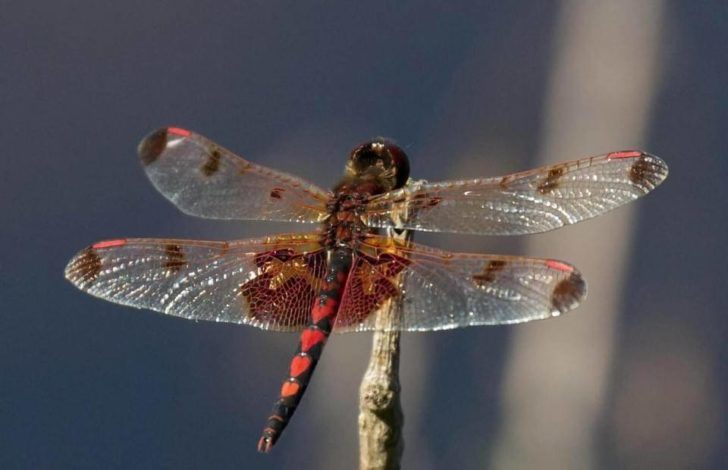
- Stages: Nymph, Dry
- Sizes: #6-14
- Colors: Reds, Blacks, Tans, Olives, Blues
Water Boatman

- Stages: Nymph, Dry
- Sizes: #10-16
- Colors: Blacks, Olives, Tans, Browns
Hoppers

- Stages: Dry
- Sizes: #6-16
- Colors: Browns, Olives, Pinks, Purples, Tans, Reds, Yellows
Ants

- Stages: Dry
- Sizes: #14-20
- Colors: Blacks, Reds, Browns, Tans
Beetles
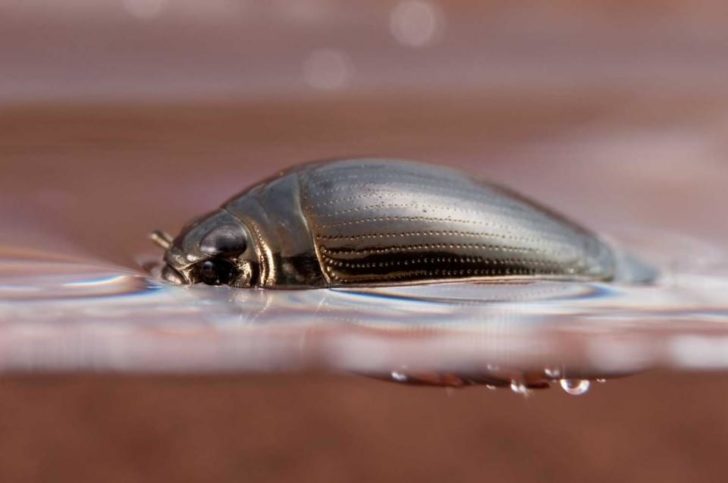
- Stages: Dry
- Sizes: #12-18
- Colors: Blacks, Olives, Browns, Purples, Blues
Conclusion
Congrats, you’ve now learned in great detail the four types of flies that fly fishermen create. Understanding these four types, in addition to basic entomology knowledge, you’ll be able to identify what any pattern imitates. As you can see from above, the lines are not clean between the four categories and you can certainly blend pattern types together. You can have a search pattern that is also fairly impressionistic or have an imitative pattern with a hot spot making it part attractor part imitative.
If you still find you are having trouble understanding what stages and insects a pattern can imitate even after identifying the pattern type, you’re probably not understanding insects to begin with. My recommendation would be to learn your bugs and typical hatches in your area so you can understand what a fly imitates. Below is a link to purchase our entomology course which covers all the insects and stages that trout eat. It’s an excellent resource to take your fly fishing and fly selection to the next level.
A Complete Resource for Fly Tying
Learn Everything You Need to Know About the Flies You Tie
Already a Member?
Sign InFly Tying Membership
- Complete resource on tying information
- Full access to entire library (including new releases every month)
- Customizable filters to help you find and mark favorite patterns for your tying session
- Monthly emails with seasonal recommendations on top flies to tie for that month
- Traditional and modern patterns for trout
- High quality and easy to follow videos and recipes
- Access from any device
- Detailed information around each fly so you can learn to fish them better
$3/month (paid annually)
If You’re Already on Our Fly Selection Series Emails….
Then you’re on the right track for improving your fly selection skills. Go ahead and read the next article below. (We’ll email it to you as well or you can read it now if you have time)
Take a Look at Our Entomology Course
You can even read a lesson for free!
Learn What Flies to Use
And Fish With Confidence
Lifetime Access: $199.99
Fully Online | Self Paced | Lifetime Access
109 Pages | Video Shorts | Pics | Diagrams | and More
Online Entomology Course
- Learn all 23 bugs types and stages that trout eat
- Learn the right flies to use any time of the year
- Eight easy to follow lessons to master the knowledge
- Catch more fish with confidence
- Get unlimited access, take as many times as you want
- Get three, 50% off coupons for anything sitewide
- Get a FREE bug seine to catch insects
- Get a downloadable PDF for print or offline reading
- Useful for anyone who fishes for trout (worldwide)

